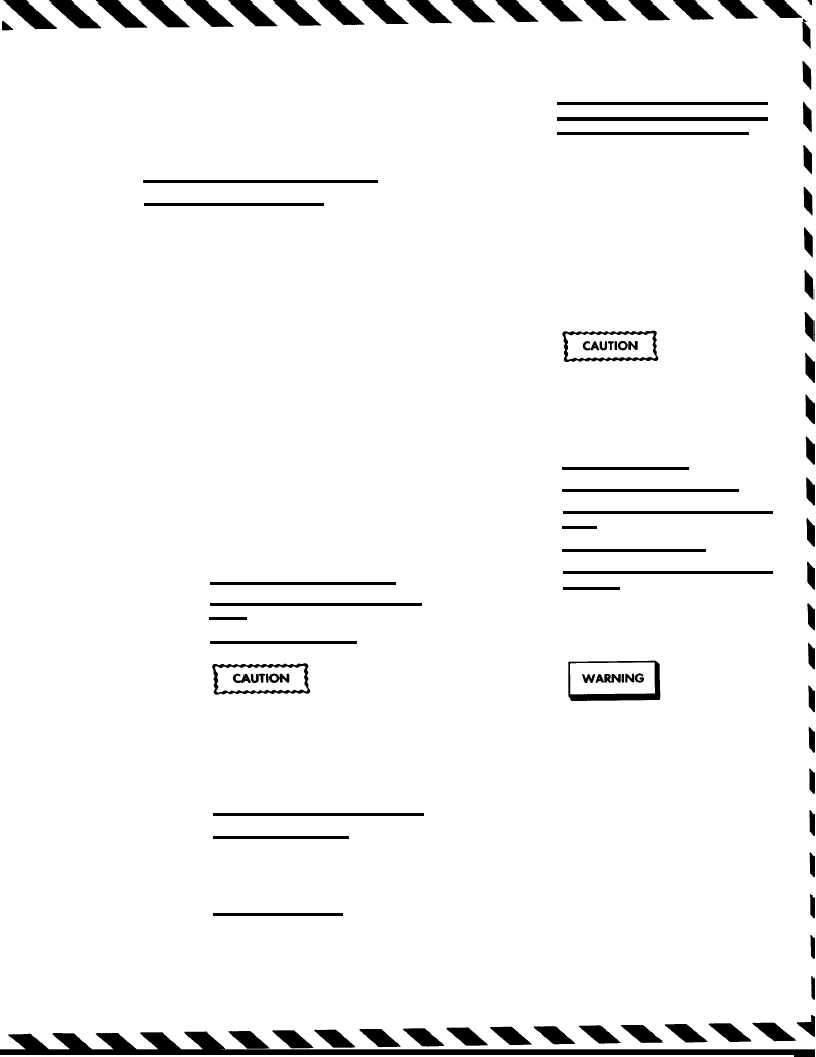9-19. PROPELLER FAILURE (OVER 2080 RPM).
If an overspeed condition occurs that cannot be
controlled with the propeller lever, or by reducing
power, perform the following:
1.
Power lever (affected engine) - IDLE.
2.
Propeller lever - FEATHER.
3.
Condition lever - As required.
4. Propeller synchronization - OFF.
5.
Engine cleanup - As required.
9-20. FIRE.
The safety of aircraft occupants is the primary
consideration when a tire occurs; therefore, it is
imperative that every effort be made by the flight
crew to put the fire out. On the ground it is essential
that the engines be shut down, crew evacuated, and
fire fighting begun immediately. If the aircraft is air-
borne when a fire occurs, the most important single
action that can be taken by the pilot is to land safely
as soon as possible.
a. Engine Fire. The following procedures shall
be performed in case of engine fire:
(1.) Engine/nacelle fire during start or
ground operations. If engine/nacelle fire is identified
during start or ground operation, perform the fol-
lowing:
1.
Propeller levers - FEATHER.
2. Condition levers - FUEL CUT-
OFF.
3.
Fire pull handle - Pull.
If fire extinguisher has been used to extin-
guish an engine fire, do not attempt to
restart, until maintenance personnel have
inspected the aircraft and released it for
flight.
4.
Push to extinguish switch - Push.
5.
Master switch - OFF.
(2.)
Engine fire in flight fire pull handle
light illuminated). If an engine fire is suspected in
flight, perform the following:
1.
Power lever - IDLE.
2. If fire pull handle light out is
extinguished: Advance power.
TM 55-1510-221-10
3.
If fire pull handle light is still illu-
minated: Engine fire in flight pro-
cedures (identified) - Perform.
NOTE
Flight into the sun at high aircraft pitch
attitude may actuate the tire warning sys-
tem. Lowering the nose and/or changing
headings will confirm a warning system
failure-caused by sun rays.
(3.)
Engine fire in fright
engine fire is confirmed in flight,
lowing:
(identified). If an
perform the fol-
Due to the possibilities of fire warning
system malfunctions, the fire should be
visually identified before the engine is
secured and the extinguisher actuated.
1.
2.
3.
4.
5.
6.
Power lever - IDLE.
Propeller lever - FEATHER.
Condition lever - FUEL CUT-
OFF.
Fire pull handle - Pull.
Fire extinguisher - Actuate as
required.
Engine cleanup - Perform.
b.
Fuselage Fire. If a fuselage fire occurs, per-
form the following:
The extinguisher agent (Bromochlorodi-
fluoromethane) in the fire extinguisher
can produce toxic effects if inhaled.
1.
Fight the fire.
2.
Land as soon as possible.
c.
Wing Fire. There is little that can be done
to control a wing fire except to shut off fuel and
electrical systems that may be contributing to the
fire, or which could aggravate it. Diving and slipping
the aircraft away from the burning wing may help.
If a wing fire occurs, perform the following:
1.
Perform engine shutdown on affected
side.
9-9


